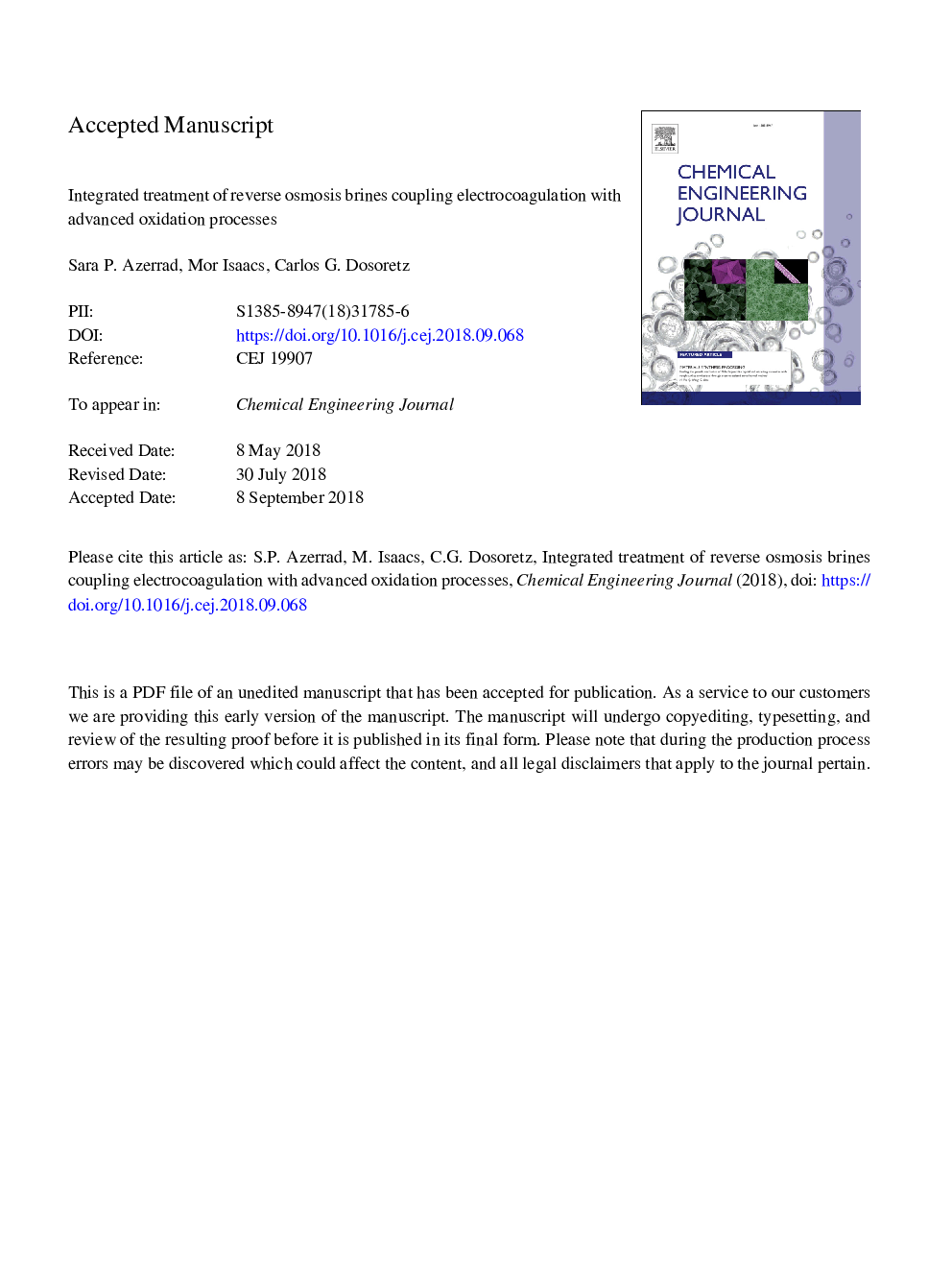| Article ID | Journal | Published Year | Pages | File Type |
|---|---|---|---|---|
| 10145228 | Chemical Engineering Journal | 2019 | 40 Pages |
Abstract
The potential of integrating electrocoagulation (EleC) with two-stage reverse osmosis (RO) to enhance desalination of secondary/tertiary effluents through removal of dissolved organic matter (DOM) and scaling salts from brines was studied. EleC appears advantageous due to the high electrical conductivity of RO brines and low residual ions concentration. EleC was performed in batch mode in a flow-through cell with recirculation through a stirred reservoir at 9.4â¯mA/cm2 current density. Anode was made of Fe or Al as indicated, and cathode of stainless steel. Chemical coagulation (CC) with FeCl3 was tested as reference. EleC resulted in effective removal of phosphate (>99%), carbonate (88-98%) and DOM (40-50%) at a high Faradaic efficiency (>90%). Fe-EleC resulted less suitable than Al-EleC due to partial Fe(II) oxidation at pH 5.5 required for optimal DOM removal, leaving high Fe content and consequently turbidity in the supernatant, whereas residual Al was negligible. At optimal conditions Al release was 75â¯mg/L for 1st-stage brines-RO1 (2-fold concentrated) and 300â¯mg/L for 2nd-stage brines-RO2 (â¼8.3-fold concentrated), corresponding to a specific energy consumption of 0.30 and 0.23 kWh/dm3mS/cm, respectively. Similar results were obtained with CC, however, its main disadvantage was the considerable increase of chlorides in the supernatant. Since coagulation removes quenching components from brines, coupling EleC with advanced oxidation processes (AOP), either UVA/TiO2 or UVC/H2O2, was also evaluated for oxidation of model micropollutants from brines prior to discharge. Either EleC or CC in tandem with AOP increased micropollutants oxidation by 3-4 fold compared to raw brines, achieving practically complete transformation.
Keywords
Related Topics
Physical Sciences and Engineering
Chemical Engineering
Chemical Engineering (General)
Authors
Sara P. Azerrad, Mor Isaacs, Carlos G. Dosoretz,
